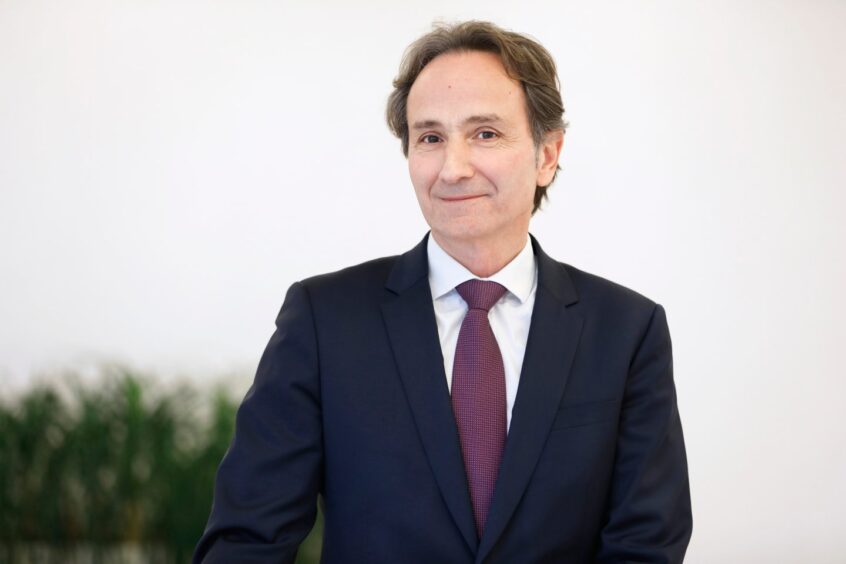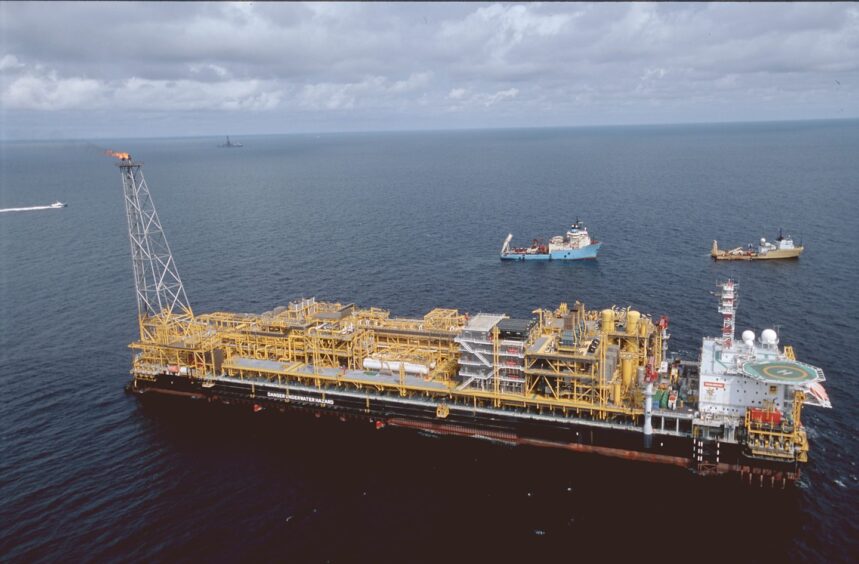
Equinor’s major focus is on its Norwegian operations, but the company’s international work will act as a cash flow driver – and will see some major projects moving ahead.
Recent moves have seen Equinor “high grading” its portfolio, Philippe Mathieu, executive vice president exploration and production international explained to Energy Voice.
“We’re trying refocus the portfolio around areas which we call core areas or core countries, where we have strong positions and when we see that we can grow these positions and create more value,” the executive said.
“It was too diverse. So that strategy means that we needed to get out of some countries, and thus the exits from Nigeria and Azerbaijan. We can now concentrate on Brazil, the US, UK, Canada, Algeria and Angola.”
Cash flow focused
State-backed Equinor struck a deal for its Nigerian interests in November 2023 to a local company. The next month, it agreed to sell its Azerbaijan stakes to Socar.
Equinor took a net impairment of $328 million in its fourth quarter, mostly on the sale from Azerbaijan. However, it expects to post a gain on the Nigerian sale, when it closes.
Mathieu, speaking on the sidelines of the capital markets day this week, said it was unlikely there would be further country exits. The next focus will be on “improving and managing” its operations around the world, in terms of economics but also reducing emissions.
There is scope for improvement in carbon emissions when compared with its Norwegian production. Its international upstream CO2 intensity is around 12 kg per barrel of oil equivalent, while its overall emissions are 6.7 kg per boe.
The EVP went on to say Equinor was not just selling off assets. The Azerbaijan assets had a similar cash flow to the Suncor package in the UK, which Equinor bought in March last year. “You can think of it as a swap,” he explained.
At the heart of Equinor’s international investment drive is a focus on extracting more value. While the plan will see the company increase production by 15%, it aims to increase cash flow by 50%.
“The aim is to build longevity, so long term cash flow, but also a portfolio where we can deliver cash flow in the short term, year on year. We’re going to be generating a lot of cash all the way to 2030,” he said.
Next generation
Some of that comes from higher production, with the aim of increasing output by 100,000 barrels per day by 2030. “But most of the cash flow increase is coming from improvements in the quality of the portfolio. We’re shifting from mature legacy assets to next generation assets.”
Equinor took three final investment decisions (FIDs) in 2023, on Rosebank in the UK, Raia in Brazil and Sparta in the US Gulf of Mexico.
“These assets are going to generate more cash flow per barrel and lower emissions. Another $5 of cash flow per barrel in 2030 compared to today. That’s why we see this 50% increase in CFFO while only increasing production by 15%.”
These “next generation assets” provide higher exposure to higher prices than Equinor’s current portfolio, he continued.
One part of this next generation will be higher spending. When the company announced the Raia project last year, it noted that total investment would be around $9 billion.
Greenfield
“The main difference between Norway and internationally is that in international we still have big greenfield projects,” Mathieu said. In addition to Raia, the company is working on the second phase of Bacalalhau, also in Brazil, and Canada’s Bay du Nord.
In Norway, the focus is on infrastructure-led exploration (ILX), with drilling around existing assets that is fast – and cheap – to bring into production.
That said, Equinor expects the three projects it reached FID on in 2023 – Rosebank, Raia and Sparta – to reach payback within three years. “These are also quite competitive,” Mathieu said.
Moving beyond Norwegian shores poses additional challenges to Equinor. The company tackles this risk by selecting where it wants to operate – and where it does not.
“We have no ambitions to operate in the US,” the EVP said, similar to Angola and Algeria.
“We see we can operate in the UK, because of our North Sea experience. Equinor can operate in Brazil, we’re the second largest operator in Brazil, and of course that gives us an advantage in terms of recruiting people and gaining access to partners.”
The company has no plans to increase its operator footprint, instead focusing where it has an advantage.
Exploration upsides
Equinor has made substantial discoveries at Canada’s Bay du Nord, but opted to put the plan on ice in 2023 in the face of higher costs.
Mathieu said Equinor had postponed Bay du Nord for three years in order to carry out a “complete redesign of the project”. The aim, he explained, is to “massively reduce the capex needed to develop the project”.
One way of doing this is to bring in suppliers in the design phase. Holding these discussions early is a departure for Equinor, although it has followed a similar model at Wisting in Norway.
Another potentially important move will be two exploration wells it plans to drill this year around Bay du Nord. Proving up more volumes, Mathieu said, would give “us a better resource base so that could also improve the business case for the project. We’re pretty active on the project.”
Another area under progress is Angola. Equinor has signed up to new exploration agreements in the country, with Mathieu noting that there was consideration under way on “bringing on new volumes”.
The official also noted the supportive Angolan regime. The authorities have made “very encouraging changes” for producers “to do exploration, to maintain production, to increase recovery”. Angola is a “very important country for us, but we also see line of sight for interesting new opportunities”.
Foot on the gas
Equinor is not just working on oil developments internationally. It has also seen some opportunities emerging in delivering gas volumes.
The Raia project will export around 14 million cubic metres per day to the domestic Brazilian market, potentially meeting 15% of the country’s total demand. “We’re also taking positions to develop the gas market”, Mathieu said, and taking a trading position.
Equinor owns Danske Commodities, an energy trading company that opened an office in Sao Paulo last year. It has also moved into power in Brazil, buying renewables energy producer Rio Energy.
“We’re not just coming in and producing gas, we’re also taking positions in the market so we can get more value out of it when we reach first production.”
No mention was made of Tanzania LNG in the company’s presentation. Despite this, Mathieu said Equinor was “working on [the project] very, very actively. We made good progress last year. We finalised the negotiation on commercial terms with the authorities.”
Once all the terms have been settled, Equinor and partner Shell can move into the next phase, of actually designing the project, Mathieu confirmed.

 © Supplied by Equinor / ?yvind Hag
© Supplied by Equinor / ?yvind Hag